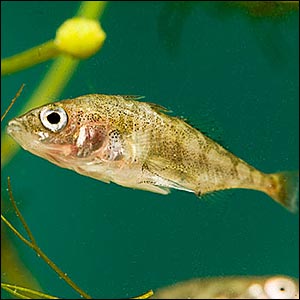
I’ve been fascinated with fishes for as long as I can remember. Maybe it’s because I’m from Minnesota, “the land of 10,000 lakes.” Or maybe I loved The Little Mermaid so much as a child that I grew up wanting to explore that world “under the sea.”
However, life for fishes is far from a fairy tale. These sentient beings are the most exploited group of animals on our planet. In the United States alone, humans kill 60 billion fishes every year for food. Excluding shellfish, that’s more than seven times the number of all other animal groups killed for food.
Why is this this death toll so astronomical? Perhaps it’s because humans have difficulty relating to fishes. After all, fishes don’t live in a world that is at all familiar to us. They aren’t cuddly and furry. They can’t express emotion on their faces. Some don’t even have faces! Fishes have long been misunderstood as primitive, cold, unfeeling creatures, but this couldn’t be further from the truth. These animals live dynamic lives within complex social communities. They recognize each other, learn from each other, and cooperate with each other.
Domestic cats, with all of their different personalities, habits, and abilities, are only one species. Now consider that what we refer to as “fish” contains more than 25,000 species. When we group them together and generalize this large group of animals, we lose sight of their distinctive qualities.
Here are a couple of my favorite species from this incredible underwater world:

Frillfin gobies live in tide pools. They each have a home pool, but sometimes when the tide rolls out, the waves sweep them into a different pools. These gobies aren’t the adventurous type and want to get home as quickly as possible. They leap from pool to pool until they reach home. They’re able to find their home pools even from ninety feet away. How are they able to do this, you wonder? When the tide is high and they’re still able to swim freely above the pools, they create a mental map of the area. They then use this map to get back to their home pool once they are swept away. I wish I had a sense of direction like these guys!

Certain species of sticklebacks have a sense of justice. To check out a predator, they pair up in teams of two and have a specific pattern to follow. While moving toward the predator, each take the lead for about half of the time. Occasionally, a fish will slack in its duty. Then, the next time there’s a scouting mission, the partner of the slacker fish will try to find a different partner. If they need to be a pair again, the fish will punish the former slacker by refusing to lead. (This reminds me of 10th grade English class more than I’d care to admit.) Passive aggressive behavior isn’t the best option, but for these sticklebacks it seems to be working.
I hope this glimpse under the sea has inspired you to learn more about our underwater friends. I’ve shared a few of the remarkable qualities of just two species of fish. Remember, there are 25,000 more for you to discover!
Please check out fishfeel.org, an organization dedicated to promoting the recognition of fish as sentient beings.

